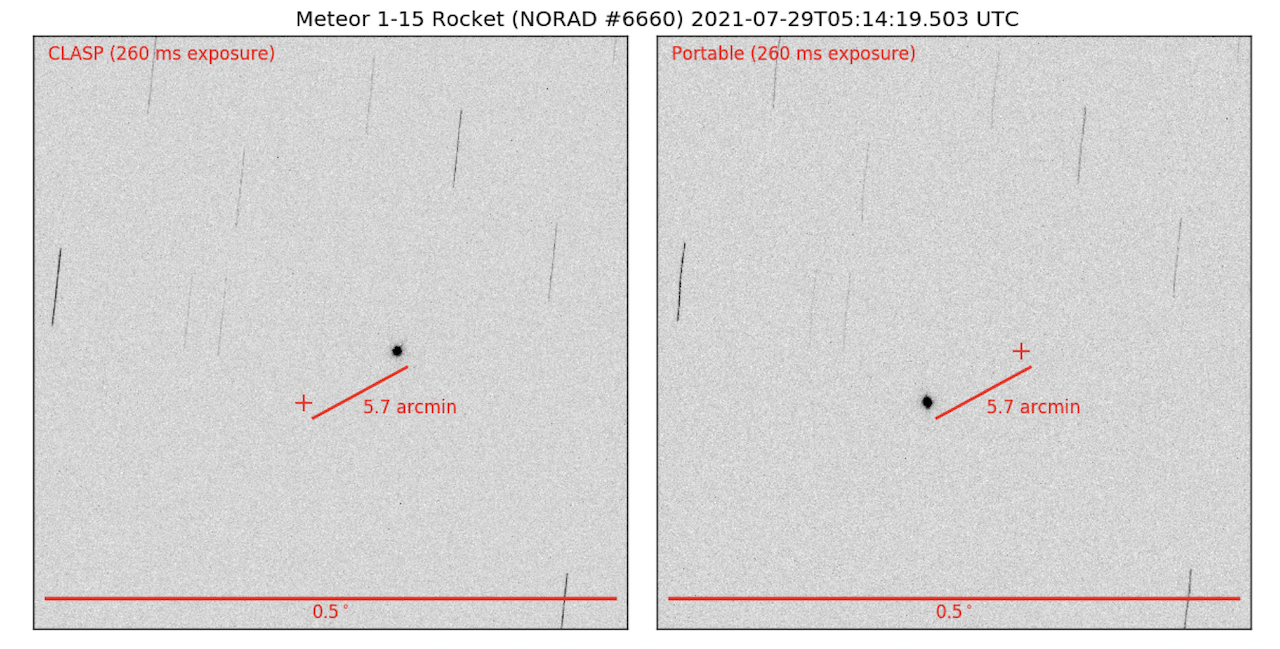Improving orbital tracking using optical parallax measurements
Supervisor: Dr. James McCormacLink opens in a new window
Anticipated start date: October 2023
Background
We are entering an era of near-exponential growth in the number of operational satellites, and new operation modes (e.g. constellations, cube sats) that increase the challenge of maintaining domain awareness. The infrastructure to monitor these objects must scale to meet these challenges. Optical cameras provide a cost-effective solution for tracking and characterising satellites particularly in geosynchronous Earth (GSO) orbit, and can measure very accurate two-dimensional (angles-only) projected positions by correlating the telescope position against the background stars. However, optical cameras lack the ability to measure range, placing them at a disadvantage compared to radar measurements where range measurements are obtained directly.
This limitation may potentially be solved through the coordinated operation of two (or more) optical cameras from two geographically separated sight lines. This takes advantage of the parallax effect to constrain the three dimensional position. This breaks the degeneracy inherent in two dimensional optical imagery, with the potential to significantly reduce the uncertainty in orbital parameter fits. As the angular resolution of electro-optical sensors already surpasses that of radars, this improvement has the potential to challenge the orbital accuracy currently provided by radar.
This project is based on the principle of parallax, the geometrical phenomenon where the apparent position of a foreground object relative to a distant background change as the observer moves. The observer-target range can be directly related through simple trigonometry to the measured offset and the observation baseline. This principle has been used in astronomy for almost 200 years to measure the distance to nearby stars and is fundamental to depth perception in humans and animals.
This technique has the potential to apply over a wide range of orbital heights, from low Earth orbits (LEO), through medium Earth orbit (MEO), all the way to GSO and beyond (to cis-lunar orbits) with appropriate choice of geographical base line.
Focus of the PhD
Previous attempts to exploit this principle for range measurements suffered severe precision limitations due to hardware limitations. Recent developments in fast-slewing telescope mounts, high-speed CMOS sensors with GPS-based time stamping, and advanced processing techniques make it possible to overcome these limitations and apply the parallax principle to all orbital regimes.
The Warwick CLASP telescope on La Palma can measure the position LEO/GSO objects at high precision. In July 2022 we briefly demonstrated a prototype portable telescope system that can be quickly deployed in the field under battery power as the second node of a dual-observation system. This is sufficient to resolve the parallax offsets that are expected at LEO ranges (baseline ~1km, within the observatory on La Palma) and GSO ranges (baseline ~100km, with portable node deployed on the nearby island of Tenerife).

Figure 1: Simultaneous observations from the Warwick CLASP and portable telescopes (July 2022) demonstrating the parallax offset over a 2km observation baseline for a rocket body in a ~900km orbit. The streaks are due to background stars smeared by the motion of the telescope; these provide an accurate position reference for the target.
The student will extend this initial demonstration with a dedicated study with the ultimate goal of exploring the real-world improvements in the orbit determination for both known and unknown satellites (potentially space debris). The initial work will focus on developing and applying numerical simulations and orbital determination techniques to understand the correlations between observational baselines (orientation/separation of telescope pair), target orbits, and observation strategies for LEO, MEO, GSO, and cis-lunar orbital regimes. The student will then lead observing trips to deploy the portable system and obtain data to experimentally validate their simulations.
